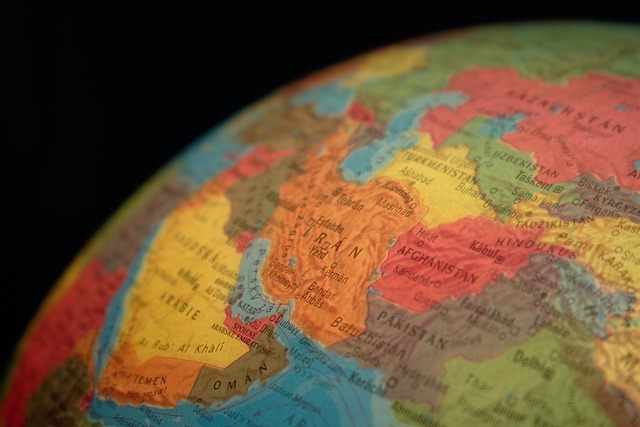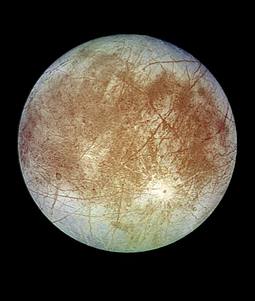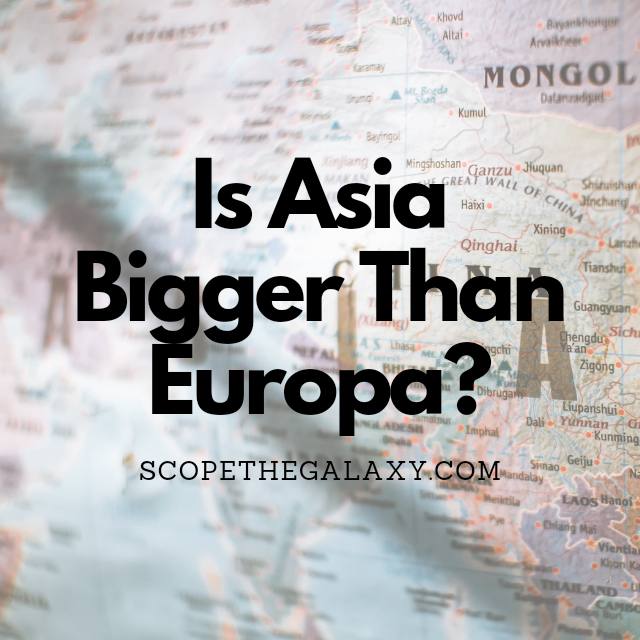*This post may contain affiliate links. This means we may make a commission if you purchase an item using one of our links*
Asia is slightly larger than Jupiter’s moon, Europa, when landmass is considered coming in at around 44.58 million square kilometers, whereas Europa has 30.9 million square kilometers of land covered in a thick blanket of ice. Asia’s volume is 2.78 billion cubic kilometers compared to Europa’s 15.9 billion cubic kilometers.
For a more detailed look at what makes Asia and Europa as big as they are, continue reading as it will be covered in more depth below.
How Big Is Asia?

Asia is the biggest continent on Earth, covering an area of 44,579,000 square kilometers, equal to 30% of the total land area of Earth or 8.7% of the planet’s total surface area. Asia possesses the highest and lowest points on Earth’s surface, plus it has the longest coastline of any continent.
Asia contains two of the three largest countries in the world: Russia and China, and it holds roughly 60% of the world’s population, with around 4.7 billion people.
We can divide Asia into five major physical regions: mountain systems, plains and deserts, plateaus, saltwater areas, and freshwater environments. Among the most impressive geographic features of the continent are the Himalayas, which extend 2,500km across the Southeast and separate the Indian subcontinent from the rest of Asia.
The Himalayas cover over 612,000 square kilometers of land; they are so vast that they contain three different mountain belts: the Greater Himalayas, Lesser Himalayas, and Outer Himalayas. The Greater Himalayans possess the highest average elevation at 20,000 feet. It also contains nine of the world’s highest peaks, which are all over 26,000 feet tall.
Asia boasts the highest mountain in the world, Mount Everest, which stands at 29,032 feet. The continent also possesses several plateaus, including the vast Iranian plateau, which covers more than 3.6 million square kilometers.
Meanwhile, the West Siberian Plain of central Russia is one of the largest continuous flatlands in the world. This plain has a length of 2,400 kilometers and a width of 1,900 kilometers; over 50% of its total area is lower than 100 meters above sea level.
Asia extends to a length of 11,000km between the Arctic Circle and the Indian Ocean; its width of 8,500km stretches from the Ural Mountains to the Pacific Ocean.
Lastly, if we were to say that the average thickness of Asia’s crust fell around 40km, it would have a volume of 2.78 billion cubic kilometres. This makes it larger still and a significant amount more than all the other continents present on Earth.
How Big Is Europa?

Europa is a moon that orbits Jupiter and is the smallest of four Galilean moons to do so. It’s the sixth closest to Jupiter out of an astonishing 80 known moons and is the sixth largest moon in our solar system.
Europa was first discovered by the renowned Galileo Galilei back in 1610 and was named Europa in honor of the Phonecian mother of a mythological king of Crete named Minos. Europa was also supposedly the lover of Zeus, who himself was the Greek equivalent of the Roman deity Jupiter.
While Europa is only around 90% the size of earth’s moon, that still makes it a whopping 30, 900,000 kilometers squared. Europa has a diameter of 3,121.6 kilometers, and the majority of the planet is covered in a thick ice sheet that is up to 25 kilometers thick in place.
The total volume of Jupiter’s moon, Europa, is around 15.9 billion square cubic kilometers, and while this may sound like a huge number, it’s only around 0.015% of Earth’s volume, which comes in at approximately 1 Trillion cubic kilometers.
While Europa is but a fraction of the size of earth, it has been suggested by scientists that it could have twice as much water. Various researchers have even suggested that the vast and rich oceans of Europa may be the most promising place in our solar system to look for life.
Summary
Asia is the largest continent on Earth and does have a surface that is roughly 1.5 times that of Europa and also has a larger diameter than Europa.
However, in overall volume Europa is around 11 times that of Asia which makes sense as it is a spherical object while the Asian continent is a mostly flat landmass.

